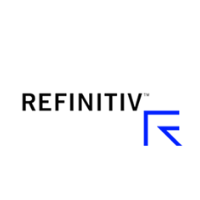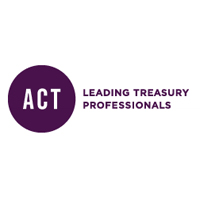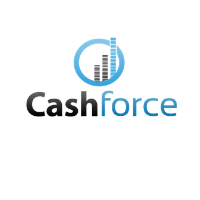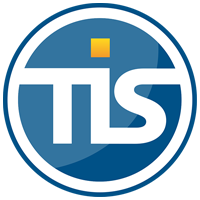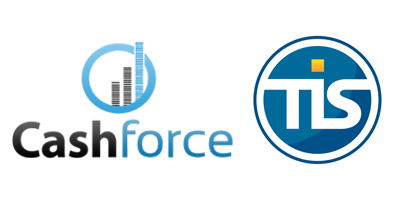25-03-2021 | treasuryXL | XE |
Komt uw bedrijf in aanraking met vreemde valuta? Wybe Schutte legt in onderstaand interview uit hoe bedrijven de complexiteit van FX kunnen aanpakken.
Maak kennis met…

Wybe Schutte is Head of Business Development Europe bij Xe. Wybe’s carrière is altijd gericht geweest op internationale bedrijfsontwikkeling en het beheren van relaties. Binnen XE spelen beiden een belangrijke rol, aangezien Xe wereldwijd de vertrouwde partner zijn van veel bedrijven en hun helpen bij het beheren en verminderen van het risico die gepaard gaan met internationaal zakendoen en valuta’s.
INTERVIEW
1. Kun je iets vertellen over Xe en haar missie?
Bij Xe draait alles om valuta’s. De meeste mensen kennen Xe van de “Currency Converter”, maar we bieden al meer dan 25 jaar internationale betalingsverkeer diensten aan voor bedrijven. Xe’s Business Solutions ondersteunt bedrijven die in aanraking komen met vreemde valuta door hun te ondersteunen bij het beschermen van de winstmarges, en het verbeteren van de cashflow. Dit onder andere door het valutarisico waarmee ze worden geconfronteerd te kwantificeren en door strategieën te implementeren om dit te beperken. Zodat onze klanten zich kunnen concentreren op hun corebusiness en zich geen zorgen hoeven te maken over hun FX.
2. Welke soorten valutarisico’s zijn er en hoe gaat XE ermee om?
Binnen elk bedrijf kijken we waar de valutarisico’s zitten en hoe we deze risico’s kunnen beperken. Waarbij er verschillende opties zijn voor bedrijven om bescherming te bieden tegen het risico, zoals termijncontracten. Valutarisico kan worden onderverdeeld in drie soorten: 1) Transactie risico, wanneer een bedrijf zaken doet in een land dat verschilt van de basisvaluta; 2) Translational risico, wanneer een bedrijf een activa of passiva in een vreemde valuta op de balans heeft staan, en 3) Economisch risico waarbij een verandering in de wisselkoers een bedrijf een concurrentievoordeel kan geven in de markt.
3. Hoe kan je de verschillende soorten valutarisico’s meten?
FX-risico kan een negatieve of positieve invloed hebben op de bedrijfsresultaten. Als je terugkijkt op de afgelopen 10 jaar, valt er te zien wat de potentiële impact zou kunnen zijn in de meest extreme, minst extreme en gemiddelde scenario’s op een gegeven tijdlijn.
Dit kan worden gedaan door te kijken naar de hoogte- en dieptepunten van de markt en de valutapositie van een bedrijf. Deze stap helpt bedrijven te begrijpen wat de impact op het bedrijfsresultaat kan zijn.
4. Wat zijn de meest voorkomende kritieke FX-problemen die bedrijven hebben?
Bedrijven die een transactionele risico hebben, kunnen een onderscheid maken tussen gecommitteerde of verwachte blootstelling aan valuta risico. Een gecommitteerde blootstelling is wanneer de prijs voor goederen of diensten in een vreemde valuta bekend en gecontracteerd zijn. Hierdoor heeft elke wisselkoersschommeling een directe impact op hun winst of kosten, tenzij ze worden afgedekt. Een verwachte blootstelling is wanneer een bedrijf een inschatting maakt om te zien wat hun vereisten kunnen zijn. De betrouwbaarheidsniveaus in de voorspelde perioden kunnen sterk variëren en het is normaal gesproken zo dat hoe groter de periode, hoe lager de betrouwbaarheidsniveaus.
5. Hoe kunnen bedrijven hun bedrijfsresultaten beschermen tegen de valutamarkten?
Er zijn een aantal belangrijke stappen die een bedrijf kan volgen om de FX-volatiliteit te verminderen. De eerste is het type risico te identificeren om daarna de risico-elementen te kwalificeren en vervolgens een strategie te ontwikkelen en deze tijdens het implementatieproces te implementeren. In deze fases kunt u beslissen welke producten het meest geschikt zijn, zodat u vervolgens over kunt gaan op markttiming en uitvoering. Ten slotte moet u uw aanpak regelmatig analyseren, herzien en aanpassen. Het is belangrijk om te onthouden dat het niet om marktspeculatie gaat, maar om het beperken van uw risico.

6. Wat is volgens jou het grootste voordeel van een werkende FX strategie?
Gezien de altijd onzekere wereld waarin we momenteel leven, kunnen financiële afdelingen en treasury teams op zoek zijn naar een strategie om met deze valutaschommelingen om te gaan. Een strategie die na verloop van tijd een aanzienlijke invloed kunnen hebben op de bedrijfsresultaten van een bedrijf. Een gestructureerde benadering van valutarisico’s kan een bedrijf in staat stellen om strategische beslissingen te nemen, in plaats van te proberen in te spelen op de dagelijkse ontwikkelingen in de markt.
7. Ervaar je verschillen in FX vóór COVID19 en de tijd waarin we nu leven? Wat zijn de verschillen?
Er hebben zich aanzienlijke bewegingen voorgedaan op de valutamarkten tijdens de Covid19-periode en er zijn nog steeds veel factoren die de dagkoersen beïnvloeden. In deze onzekere tijden zijn onze opdrachtgevers op zoek naar zekerheid en stabiliteit. En hoewel prijs altijd belangrijk is, werden andere sleutelfactoren zoals veiligheid en geloofwaardigheid belangrijker. Uiteraard was de impact op onze klanten heel verschillend en we hebben met hun samengewerkt om de oplossingen en flexibiliteit te bieden die ze nodig hadden. We hebben veel nieuwe klanten verwelkomd uit nieuwe industrieën terwijl ze groeiden, en we ondersteunen nieuwe en bestaande klanten die groeiden, het lastig hadden, of hun bedrijfsmodellen aanpasten aan de veranderende markt.
8. De markt verandert voortdurend, hoe blijft XE op de hoogte van de laatste ontwikkelingen in de valutawereld?
We werken nauw samen met onze klanten om hun behoeften continu te begrijpen en hierop aan te passen. Onze deskundige dealers houden de markt nauwlettend in de gaten. Inzicht in de bewegingen, weerstandsniveaus en belangrijke economische en politieke updates die de markt kunnen beïnvloeden zijn erg belangrijk, en we houden die in de gaten zodat onze klanten zich daar geen zorgen over hoeven te maken. Xe werkt ook nauw samen met onze zusterbedrijven en moederbedrijf Euronet Worldwide.
9. Hoe ziet de toekomst van FX er in jouw perspectief uit?
De nabije toekomst zou het hoofd kunnen bieden aan buitengewone niveaus van balansuitbreiding en recessie, wat mogelijk zou kunnen leiden tot een langer stimulerend/ expansief monetair beleid dat op zijn beurt de valutakoersen van de landen die ze dragen, zou kunnen drukken. De gevolgen hiervan op de korte tot middellange termijn zouden een gebrek aan grote economische expansie kunnen zijn, aangezien het kapitaalrendement vaak negatief is wanneer de inflatie wordt meegerekend. Dit kan betekenen dat we een herschikking van de FX-sterkte zien naar op commodity based valuta’s (CAD / AUD / NZD) en alternatieve veilige havens (CHF). We zouden deze verschuiving echter op langere termijn kunnen zien, aangezien met name de overheidsschuld houdbaarder en aantrekkelijker wordt tegen zulke lage rentetarieven en bredere investeringen zou kunnen uitnodigen voor landen en tot op zekere hoogte de particuliere industrie.
We zijn getuige geweest van een grote volatiliteit in de FX-markt door een grotere afhankelijkheid van een smallere data kern. Inflatie en rentetarieven, maar ook verhalen over de overheidsschuld en de uitbreiding van de balans hebben de meeste invloed op de renteschommelingen.
10. Wat is tot nu toe jouw beste ervaring ooit in de wereld van valuta’s?
Een scale-up ondersteunen met hun complexe FX-vereisten en hen in staat stellen hun bedrijf in een korte tijd te laten groeien door het FX-risico te elimineren en gaandeweg aanzienlijke kostenbesparingen te realiseren.

Meer over XE
Bij XE draait alles om Valuta. We bieden een uitgebreid portfolio van valutadiensten en -producten aan, waaronder onze valutacalculator, marktanalyses, valutagegevens-API en snelle, gemakkelijke en veilig betalingsverkeer voor consumenten en bedrijven.
XE faciliteert wereldwijd meer dan 13.000 bedrijven per jaar bij het beheren van hun vreemde valuta en het vooruit plannen om de risico’s van valutaschommelingen te beperken.
XE is onderdeel van Euronet Worldwide (EWI), een aan Nasdaq genoteerde wereldwijde aanbieder van elektronische en transactie verwerkingsoplossingen met een marktkapitalisatie van ongeveer 7,5 miljard dollar.
XE Business Services
Internationale betalingen en beheer van valutarisico’s van ‘s werelds vertrouwde autoriteit op valutagebied. De concurrentie voorblijven is al moeilijk genoeg zonder de complexiteit van vreemde valuta. XE kan u helpen tijd en geld te besparen, zodat u kunt blijven doen waar u goed in bent: uw bedrijf runnen. Onze oplossingen bieden u zekerheid in een onzekere wereld en stellen uw bedrijf in staat om de juiste beslissingen te nemen.
Bezoek XE.com
Lees XE blogs


